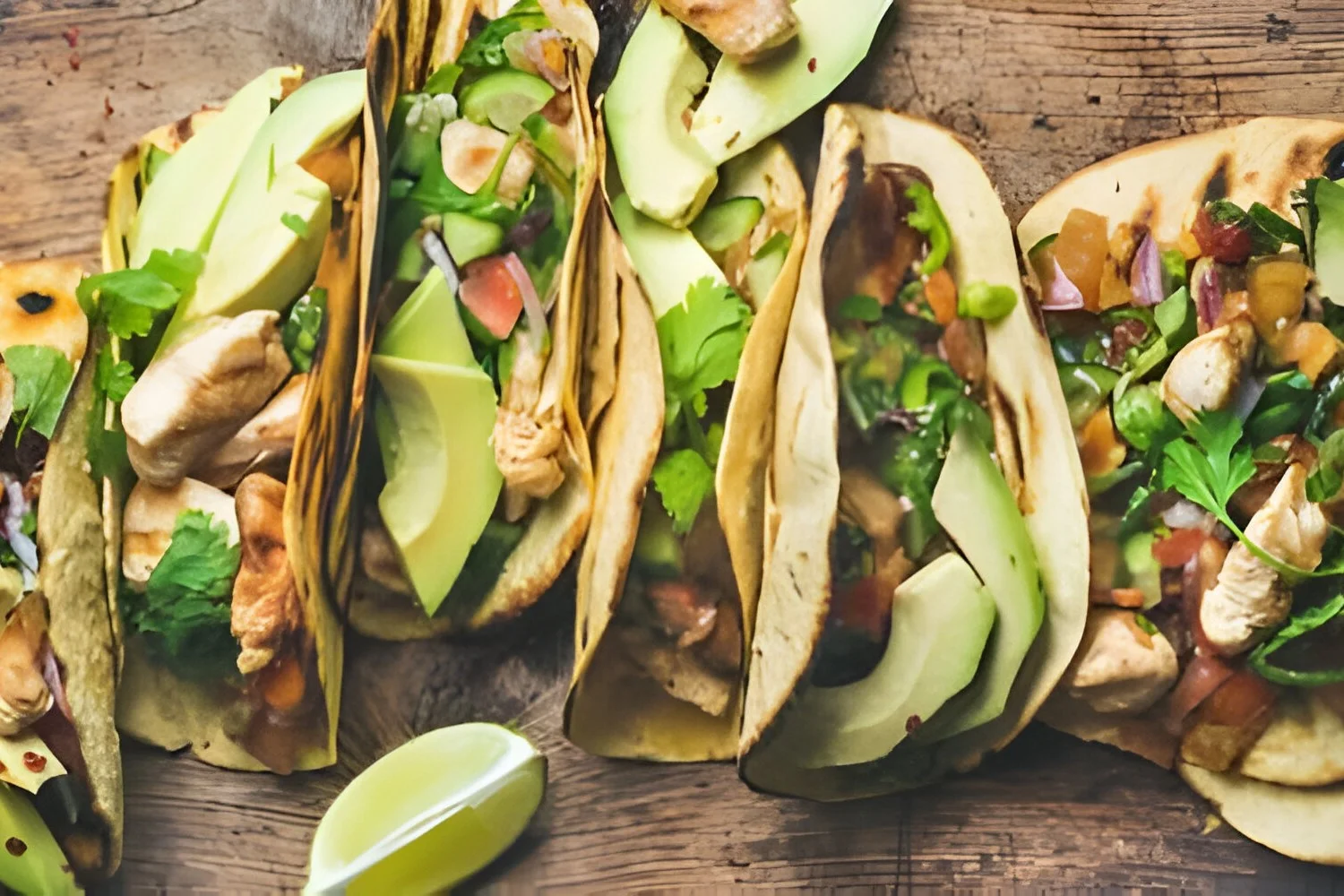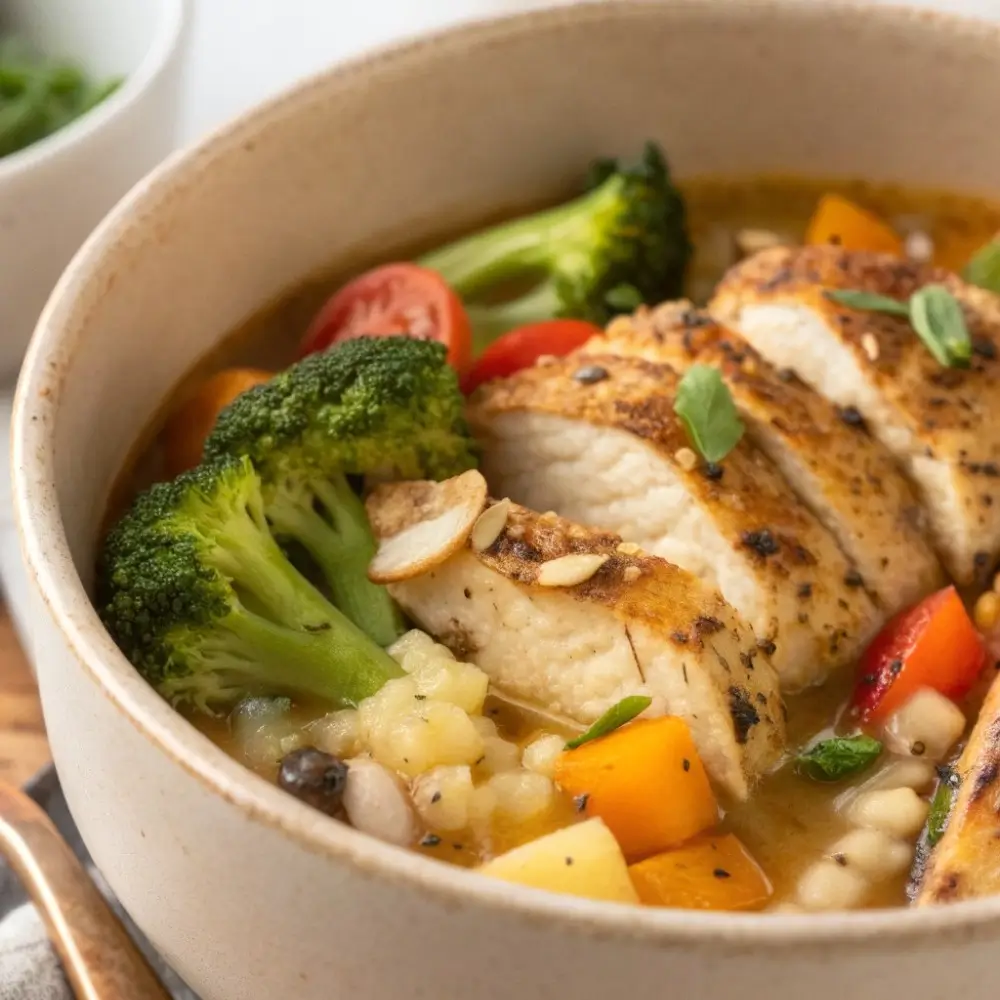Table of Contents
Ah, street tacos—those marvelous bundles of joy that turn a simple meal into a vibrant fiesta of flavors right on your palate. Imagine wandering through the bustling streets of Mexico, where the air is perfumed with the tantalizing aromas of grilled meats, fresh cilantro, and toasted corn tortillas. It’s not just food; it’s a cultural immersion, a bite-sized journey through history and tradition. What is a street taco, you might ask? This guide isn’t just about answering that question; it’s about transporting you, bite by bite, to the heart of Mexican street cuisine. From the smoky allure of carne asada to the zesty punch of pico de gallo, we’ll unwrap the secrets behind these culinary treasures. Ready to embark on this delicious adventure? Let’s dive in, taco lovers!
Introduction to Street Tacos
What is a Street Taco?
At their core, street tacos are more than just a quick snack; they’re a vibrant expression of Mexican culture, savored across bustling city corners and lively marketplaces. Unlike their heftier Tex-Mex cousins, these tacos are small, making them perfect for on-the-go indulgence. But don’t let their size fool you; each bite is a mosaic of flavors, meticulously crafted to deliver an authentic taste experience.
Street Tacos vs. Regular Tacos
The battle of street tacos versus regular tacos involves tradition versus adaptation. Street tacos, wrapped in small corn tortillas, epitomize Mexican street food. They’re filled with marinated meats like carne asada, adorned with onions, cilantro, and lime—simplicity at its finest.
Regular tacos, often found outside of Mexico, may use larger flour tortillas and more toppings. While delicious, they sometimes stray from the minimalist tradition of street tacos.
Through the lens of street tacos, we glimpse Mexico’s culinary landscape. Every bite tells a story of heritage and community. As we explore these tacos further, we uncover not just the ingredients but also the traditions that have shaped Mexican street food.
Historical Background
Origins of Street Tacos
The history of street tacos is as rich and layered as the flavors found within them. Rooted deep within Mexico’s vibrant culture, these culinary staples date back to the pre-Columbian era. Initially, indigenous Mexicans crafted simple meals using corn tortillas as a base, a tradition that has evolved yet remained fundamentally unchanged through centuries.
The arrival of the Spanish introduced new meats into the local diet, such as beef and chicken, which eventually found their way into the tortillas, giving birth to the taco as we know it today. But it wasn’t just the ingredients that transformed; it was the social significance of tacos that burgeoned. Tacos became a unifying element across Mexico, a common thread in the fabric of daily life, transcending class and regional differences.
Cultural Significance in Mexico
In Mexico, tacos are more than just a meal; they’re a social institution. Street corners and markets come alive at night, turning into bustling hubs of community interaction fueled by taco stands. Each vendor serves up their own version of the classic, from the smoky flavors of carne asada to the tangy zest of tacos al pastor. These stands aren’t just places to eat; they’re communal spaces where stories are shared, friendships are forged, and the richness of Mexican culture is celebrated.
Evolution and Global Popularity
As Mexicans migrated for work and settled in new lands, they carried their culinary traditions with them, introducing tacos to a global audience. Over time, the humble street taco has transcended its origins, becoming a worldwide phenomenon. While they have been adapted and reimagined in countless ways across the globe, the essence of the street taco remains: simple ingredients, bold flavors, and a deep connection to Mexican culture.
Through the story of street tacos, we witness a culinary journey that mirrors the broader tapestry of Mexico’s history—rich, diverse, and endlessly fascinating. As we continue to explore the characteristics that define these beloved tacos, we’ll delve deeper into what sets them apart and how they continue to captivate the hearts (and stomachs) of people everywhere.
Characteristics of Street Tacos
Key Features of Street Tacos
At the heart of street tacos lies a combination of simplicity and authenticity, each component playing a crucial role in crafting the perfect bite. Moreover, the hallmark of a genuine street taco is its size and construction. Traditionally served on small, soft corn tortillas, these tacos are designed to be eaten by hand. Often with a double layer to ensure they hold their precious cargo without falling apart, this practical approach reflects the taco’s street food origins. It offers ease and efficiency without compromising taste.
Size and Tortilla Type
The tortilla, the taco’s foundation, is more than just a vessel—it’s a canvas for the rich tapestry of flavors it envelops. Corn tortillas, preferred for their robust texture and deep, earthy flavor, are the traditional choice, reflecting the crop’s historical significance in Mexican agriculture and cuisine. Their modest diameter, usually around six inches, makes street tacos perfect for enjoying in multiples, inviting diners to sample a variety of fillings.
Fillings and Toppings
The soul of the street taco is its filling. Options range from grilled meats like carne asada to specialty items like carnitas and al pastor. These fillings are often marinated in spices and herbs, then cooked to perfection.
Toppings on street tacos are deliberately minimalistic. They typically include finely chopped onions, fresh cilantro, and a wedge of lime. This simplicity allows the main ingredients to shine while providing a crisp contrast to the rich meats.
Cooking Techniques
Authentic street tacos often feature meats cooked over open flames or griddled to tender, juicy perfection. Additionally, this method imparts a distinctive char and smokiness, essential to the taco’s flavor profile.
Furthermore, the ritual of grilling or slow-cooking outdoors adds depth to the taste and creates an aromatic allure. This solidifies the street taco’s status as a communal culinary experience.
Moreover, through these characteristics, street tacos exemplify the power of simple, well-executed flavors. As we explore bringing the magic of Mexican street corners into your kitchen, we’ll reveal the secrets of preparing street tacos at home. This ensures you can savor this authentic experience, wherever you are.
Preparing Street Tacos at Home
Creating street tacos at home is more than a culinary endeavor. It’s an invitation to immerse yourself in Mexican cuisine. With key ingredients and simple techniques, you can transform your dining table into a bustling street corner. This brims with the flavors and aromas of authentic tacos.
Ingredients and Substitutions
The beauty of street tacos lies in their versatility. Start with small corn tortillas and your choice of meat. Options include carne asada, chicken, or even vegetarian options like sautéed mushrooms. Add onions, cilantro, and lime for authenticity.
For traditionalists, corn tortillas are a must. However, small flour tortillas work as well. Marinate your chosen protein in a mixture of spices like chili powder, cumin, garlic, and lime juice. This elevates your tacos with deep, complex flavors.
Simplicity is key, but feel free to get creative with toppings. Try pico de gallo, avocado, or a sprinkle of queso fresco for added texture and taste.
Step-by-Step Cooking Guide
- Marinate Your Meat: Combine your spices and lime juice in a bowl, add your protein, and ensure it’s well-coated. Let it marinate in the fridge for at least an hour to absorb the flavors.
- Prepare Your Tortillas: Heat a skillet over medium heat and warm each tortilla until pliable and slightly charred. Keep them wrapped in a cloth to stay warm.
- Cook Your Meat: Grill or pan-fry your protein over medium-high heat until cooked through. Let it rest before chopping it into bite-sized pieces.
- Assemble Your Tacos: Lay two warm tortillas on top of each other, add your filling, and top with onions, cilantro, and a squeeze of lime.
Serving and Presentation Tips
Serving street tacos is all about the communal experience. Arrange your ingredients in bowls on the table, allowing everyone to build their perfect taco. This not only makes for a fun, interactive meal but also lets guests customize their tacos to their taste preferences.
For an added touch, serve your tacos alongside traditional sides like Mexican rice and beans or a fresh pico de gallo. Additionally, don’t forget a selection of hot sauces for those who enjoy a spicy kick!
By following these steps, you’ll bring the essence of Mexican street food culture right into your home. This offers a delicious way to explore new flavors and traditions. Moreover, in our next section, we’ll dive into the different varieties of street tacos, showcasing the diversity and creativity that make this dish a beloved staple worldwide.
Street Taco Varieties
The world of street tacos is as diverse as the regions of Mexico itself, each type boasting its own unique blend of flavors and ingredients. Whether you’re a fan of tender, slow-cooked meats or fresh, zesty seafood, there’s a street taco out there with your name on it. Let’s explore some of the most popular varieties that have captivated taste buds around the globe.
Tacos al Pastor
Perhaps one of the most iconic street tacos is Tacos al Pastor. Additionally, they feature thin slices of beef marinated in a blend of dried chilies, spices, and pineapple. Furthermore, the meat is cooked on a vertical spit, reminiscent of shawarma techniques from Lebanese immigrants. Moreover, served on small corn tortillas and often topped with pineapple, onions, and cilantro, Tacos al Pastor exemplify culinary fusion done right.
Carnitas Tacos
Carnitas, meaning “little meats,” are the heart and soul of Carnitas Tacos. This dish features beef that’s been simmered and then fried to achieve a delightful contrast of tender insides and crispy edges. The meat is then shredded and served atop warm corn tortillas, garnished with a simple yet refreshing combination of onions and cilantro. A squeeze of lime juice adds the final touch, bringing out the rich flavors of the beef.
Carne Asada Tacos
For beef enthusiasts, Carne Asada Tacos are a must-try. Additionally, “Carne asada” translates to “grilled meat,” offering marinated, grilled beef steak in tortillas. The marinade, a mix of lime, garlic, chili, and spices, ensures flavorful, tender meat. Accompanied by onions, cilantro, and lime, these tacos are a straightforward delight.
Each variety showcases taco adaptability and flavor depth. Whether slow-cooked carnitas, tangy al pastor, or succulent carne asada, street tacos offer diverse tastes.
Wrapping up our journey through street tacos, let’s embrace the culture. From humble beginnings to global culinary status, street tacos unite people. Furthermore, they transcend borders, fostering community around shared tables.
If you’re interested in exploring more about traditional Mexican tacos, check out this guide to different types of tacos.
FAQs About Street Tacos
In our exploration of street tacos, many questions arise, reflecting the curiosity of food enthusiasts eager to learn about this beloved dish. Here, we’ll address common inquiries, shedding light on the nuances that make street tacos fascinating for both culinary novices and seasoned aficionados.
Why Do Street Tacos Use Two Tortillas?
The practice of doubling up on tortillas for street tacos serves a practical purpose. First and foremost, it helps to reinforce the taco’s structure, ensuring that the generous fillings and their juices don’t lead to a messy disintegration. Additionally, it’s a nod to tradition, echoing the taco’s origins as a hearty, handheld meal for workers on the go. The extra tortilla provides an added layer of texture and flavor, making each bite even more satisfying.
Can I Use Flour Tortillas for Street Tacos?
While corn tortillas are the traditional choice for street tacos, reflecting the historical and cultural significance of corn in Mexican cuisine, flour tortillas can be used as a substitute. This switch is more common outside of Mexico, catering to different tastes and availability. However, it’s worth noting that using flour tortillas might change the texture and flavor profile of the tacos, offering a softer and milder base.
Are There Vegetarian Options for Street Tacos?
Certainly! Street tacos are incredibly versatile, catering to various dietary preferences with ease. Vegetarian options abound, featuring grilled vegetables like bell peppers, onions, and zucchini, or creative choices such as marinated mushrooms. Topped with cilantro, onions, and a squeeze of lime, vegetarian street tacos offer a flavorful, authentic experience without compromising on taste.
Conclusion and Final Thoughts
As we conclude our journey through the vibrant world of street tacos, it’s evident that these bites are more than food; they’re a celebration of culture, history, and community. From bustling street corners in Mexico to kitchens worldwide, street tacos unite people, offering a taste of rich Mexican tradition.
Embracing the Street Taco Culture
To truly appreciate street tacos, it’s essential to embrace not only the flavors but also the spirit they represent. Whether you’re enjoying a taco from a local vendor or preparing your own at home, remember that each bite is a nod to the generations of cooks who have shaped this dish into a beloved staple. It’s an invitation to explore, to taste, and to connect with a culinary tradition that spans centuries and borders.
The Importance of Authenticity
In our globalized world, where cuisines mix and evolve, street tacos remain a testament to authentic flavors. As we enjoy various variations, let’s honor the dish’s roots, celebrating traditional techniques and ingredients.
Thank you for joining us on this flavorful adventure. Whether you’re a taco enthusiast or new to Mexican street food, we hope this guide inspires you. Here’s to many more delicious discoveries, one taco at a time!





